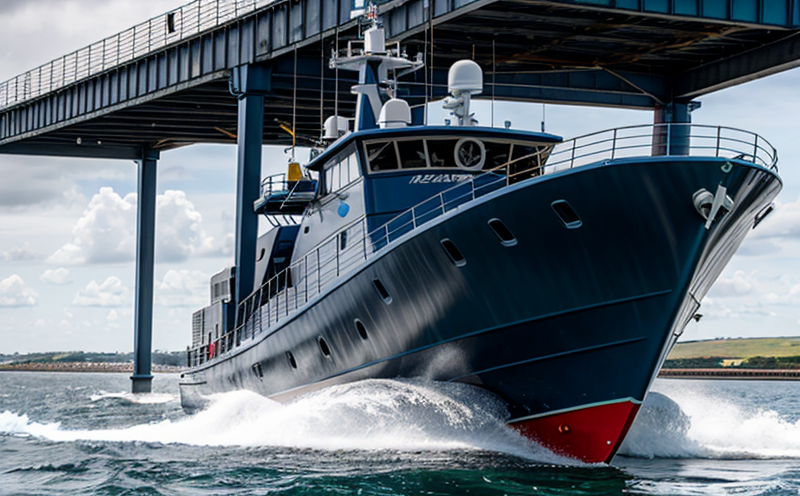IMO MARPOL Annex VI NOx Emission Compliance Testing
The International Maritime Organization's (IMO) Marine Pollution Prevention Convention (MARPOL), specifically its Annex VI, establishes regulations to control air pollution from ships. One of the key requirements under Annex VI is the limitation on nitrogen oxides (NOx) emissions from marine diesel engines and propulsion systems. This regulation aims at reducing NOx emissions by setting emission ceilings for different categories of ships.
To ensure compliance with MARPOL Annex VI, shipowners and manufacturers must undergo rigorous testing to demonstrate that their engine and propulsion systems meet the specified limits. The International Laboratory is equipped with advanced test facilities capable of simulating real-world operating conditions to accurately measure NOx emissions from marine engines. Our expertise lies in providing comprehensive testing services that help clients achieve compliance with MARPOL Annex VI.
The testing process involves several key steps, which are crucial for ensuring accurate and reliable results:
- Preparation of the engine: The engine is configured to operate under specific test conditions that mimic real-world scenarios. This includes setting operational parameters such as speed, load, and temperature.
- Sampling and measurement: High-precision sampling devices are used to collect exhaust gases from the engine during operation. These samples are then analyzed using state-of-the-art analytical instruments to quantify NOx emissions.
- Data analysis: The collected data undergoes rigorous statistical analysis to ensure that it meets the required standards. This includes comparing measured values against established limits outlined in MARPOL Annex VI.
Our laboratory adheres strictly to international standards such as ISO 17025, which ensures our testing methodologies are robust and reliable. By leveraging these standards, we can provide clients with accurate test results that facilitate compliance with regulatory requirements.
The importance of NOx emission compliance cannot be overstated in today's environmentally conscious world. Compliance not only helps shipowners avoid potential legal penalties but also contributes to reducing the environmental impact associated with maritime transportation. Our team of experienced professionals is dedicated to helping you navigate this complex landscape and ensure successful compliance.
Why It Matters
The regulation of NOx emissions from marine engines is crucial for several reasons:
- Environmental Impact: NOx emissions contribute to the formation of smog and acid rain, which can have harmful effects on ecosystems. By reducing these emissions, we can mitigate their adverse impacts.
- Regulatory Compliance: Failure to comply with MARPOL Annex VI can result in significant fines and penalties for non-compliant entities. Ensuring compliance through rigorous testing is essential to avoid such legal issues.
- Health Concerns: NOx emissions are linked to respiratory diseases and other health problems, making it imperative to control them effectively.
In addition to these broader implications, compliance with MARPOL Annex VI also has direct benefits for shipowners. It enhances the reputation of a company, improves operational efficiency by optimizing engine performance, and reduces long-term costs associated with potential fines or remediation efforts.
Quality and Reliability Assurance
- Certification: Our laboratory is accredited to ISO 17025, ensuring that all testing procedures meet the highest standards of accuracy and reliability.
- Instrumentation: We utilize cutting-edge equipment for NOx emissions testing, including advanced sampling systems and precise analytical instruments capable of detecting trace amounts of pollutants.
- Data Integrity: Our data processing methods are designed to ensure the integrity and accuracy of test results. This includes using statistical techniques to validate measurements and identify any anomalies.
The combination of these factors ensures that every test conducted in our laboratory is both reliable and reproducible, providing clients with confidence in their compliance status.
Use Cases and Application Examples
- New Engine Development: Shipbuilders and engine manufacturers can use our testing services to validate the design of new engines before commercial release, ensuring they meet stringent NOx emission limits.
- Retrofit Solutions: Owners of existing vessels looking to upgrade their propulsion systems for better performance or compliance with stricter regulations may benefit from our testing capabilities. We help them evaluate potential retrofits and validate improvements made during the process.
- Operational Efficiency: By analyzing NOx emissions under various operating conditions, ship operators can optimize fuel consumption and reduce costs while maintaining environmental standards.
In addition to these applications, our testing services also support compliance audits conducted by regulatory bodies. Our detailed reports provide comprehensive insights into the performance of marine engines, facilitating transparent communication between stakeholders involved in maritime operations.





